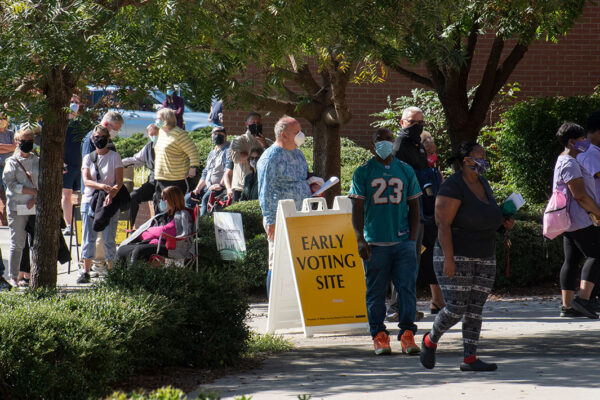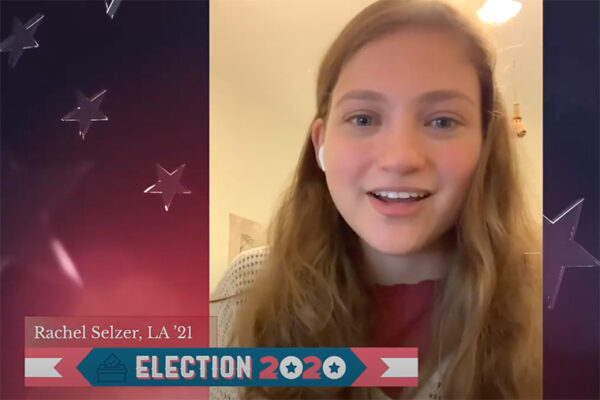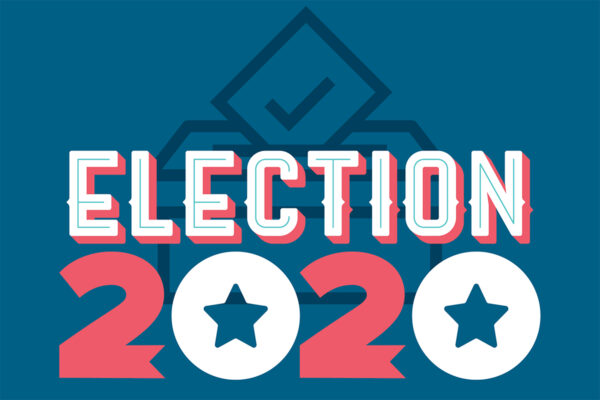
The Athletic Complex once again will serve as the on-campus polling location at Washington University in St. Louis. All students who live on campus and are registered to vote in St. Louis County, Mo., may cast their ballots at the Athletic Complex between 6 a.m. and 7 p.m. Nov. 3. And, for the first time, so may registered students, faculty and staff who are approved to be on campus and live in St. Louis County. All voters must complete the daily self-screening and wear a face mask.
Lindsay Gassman, voter engagement fellow at the Gephardt Institute for Community and Civic Engagement, said voting on campus will be safe and convenient. The St. Louis County Board of Elections has assigned additional poll workers to the Athletic Complex, and the Gephardt Institute is introducing a new digital queuing system so students don’t need to wait in long lines.
“We want to make sure people experience the energy and excitement of Election Day, but in a way that puts their safety first,” Gassman said.
To ensure physical distancing, the university will limit the number of voters in the Athletic Complex. Once the building reaches capacity, voters may join a digital line by scanning a QR code. They will receive a text when they are to return to the physical line at the Athletic Complex. In the meantime, community members may go about their business or enjoy snacks, student performances and games organized by the Gephardt Institute outside of the Athletic Complex. The Gephardt Institute is seeking volunteers to support its Election Day efforts.
Once inside, voters will find an increased number of poll workers compared to prior elections, including volunteers devoted to resolving any issues such as address changes or missing registrations. There will be no digital kiosks this year, only paper ballots — a switch that should help lines move along, said Theresa Kouo, assistant director of civic engagement education at the Gephardt Institute. The wait for digital kiosks in 2016 contributed to long wait times.
“There will be more places where people can sit and complete their ballot,” Kouo said. “This ballot is very long. In addition to the presidential election and statewide offices, there are a lot of judicial candidates and amendments, so it’s going to take more time to complete.”
Kouo said it’s hard to predict how many voters will cast their ballots at the Athletic Complex. Because of the pandemic, many voters have opted to use mail-in or absentee ballots. This is also the first year that St. Louis County has allowed voters to cast their ballot at any polling location within its borders.
“There are a lot of firsts and unknowns this election,” Kouo said. “That’s why it’s important to make a plan for Election Day and to build time in your day to vote.”
The Gephardt Institute is striving to boost overall student turnout to 62.5%, an increase from 52.5% in the 2016 presidential election. It’s both an ambitious goal and an acknowledgement that young people vote at rates lower than other age groups. To increase participation, the Gephardt Institute is sponsoring virtual debate watch parties and forums such as “Counting Every Vote: Election Integrity in 2020” with the institute’s namesake, former Congressman Richard A. Gephardt, on Tuesday, Oct. 27.
“There can be a disillusionment among young people, a sense that their vote doesn’t matter,” Kouo said. “So our job is to help students connect the dots between elections and the issues they care about like racial injustice.”
That work will continue after Election Day. The Gephardt Institute is tentatively planning a Nov. 10 event titled “The Election Experience,” which will provide analysis of the administration of the election and reflect on the country’s general confidence in the safety and security of elections. After the inauguration in January, university faculty representing different schools and disciplines will participate in a symposium exploring the election’s implications.


